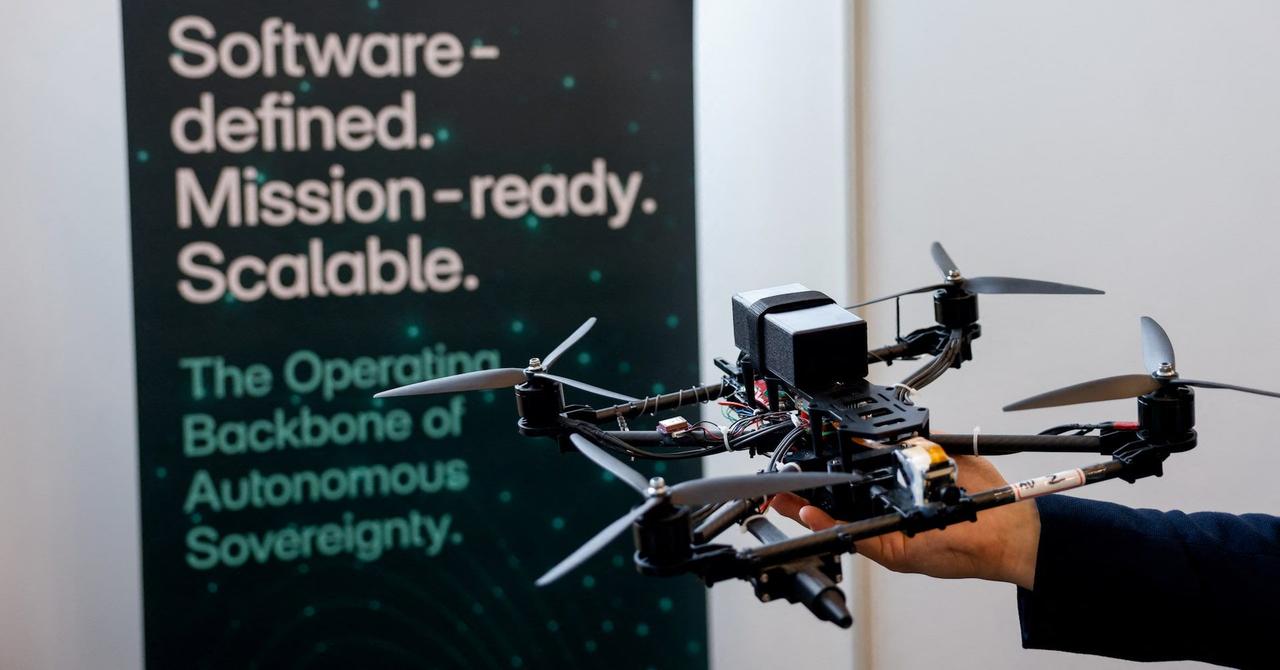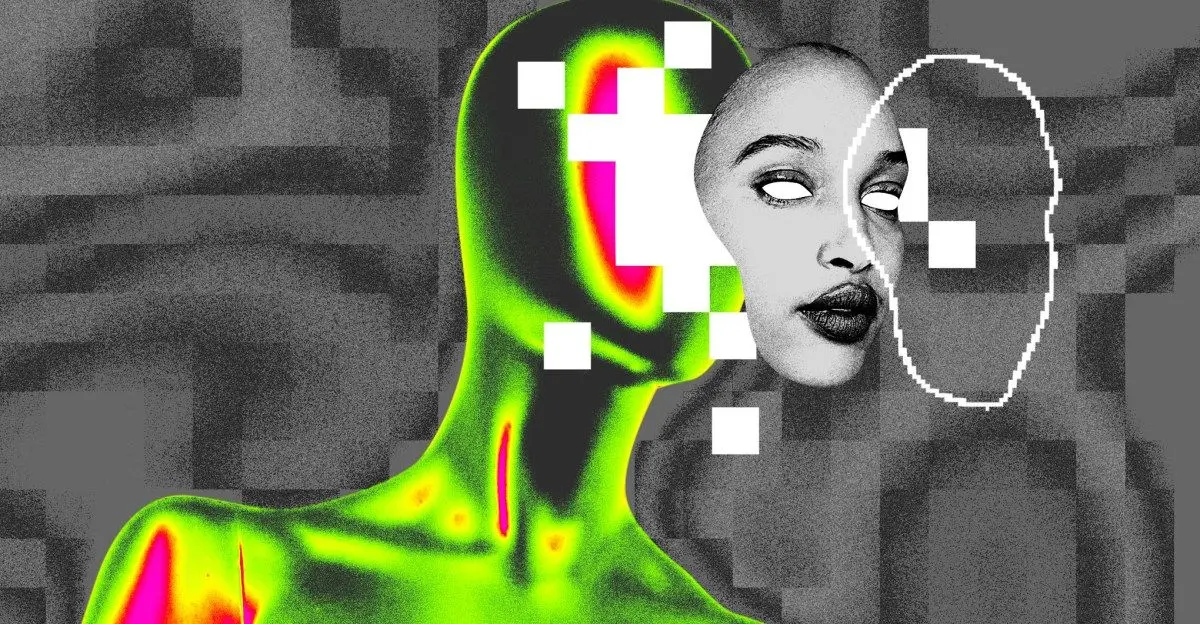US Sends 33,000 AI-Powered 'Strike Kits' to Enhance Ukrainian Drones
3 Sources
3 Sources
[1]
US sends 33,000 smart 'strike kits' for Ukrainian drones
Auterion CEO explains how autonomy will change the face of warfare interview The war in Ukraine is increasingly becoming a battle of drones, and defense software firm Auterion has just won a $50 million Pentagon contract to supply 33,000 AI-powered "strike kits" that aim to augment Ukrainian UAVs and push them to the front lines. The so-called "strike kits" consist of a circuit board based around the defense company's Skynode S system, which uses custom software to avoid jamming and give a level of autonomy to drones once an operator has picked the target. "We've built a proprietary software defined radio controller to avoid jamming," Auterion CEO Lorenz Meier told The Register. "We have a very fast hopping link that is encrypted. So you go from analog to frequency hopping and encryption, so that is a significant benefit." He explained that some systems, operating under line-of-sight, are limited in the extent to which the controller can do final targeting. The Skynode systems can be flown higher, until the operator identifies the right target, then sent on their mission without operator control for the last mile. This will give the Ukrainian operators a significant advantage, he claims, since most Russian jamming systems are range limited and can only operate in that last mile. Having a drone smart enough to carry out the job without a link to the operator negates such jamming. "You can lock onto the target while you still have the link, and then you can lose the link as you approach the target, which defeats any manually guided drone, but does not defeat our product," he told us. The Ukrainian army has already successfully tested around 3,000 drones using the circuit boards and software added to off-the-shelf hardware. But Ukraine claims to have manufactured around two million drones last year and has a goal of four million this year. So 33,000 advanced bits of kit are a drop in the ocean, for now. The drones used are domestically produced in Ukraine and have the strike kits added in later using standard connection ports. The custom OS allows the use of AI vision systems developed by Auterion for targeting and navigation, something Meier has been working on for many years both in academia and in business. The Ukrainian forces have used drones to great effect in ambush attacks like Operation Spiderweb, where over 100 drones were reportedly smuggled close to five Russian airbases, thousands of miles from the front line. The drones reportedly destroyed or damaged more than 40 planes. Meier declined to comment on whether his software was used in the attacks. On the other side of the conflict, Russia has massively stepped up its production after initially underestimating the usefulness of drones in combat. It has secured the manufacturing rights to Iran's Shahed 136 drone and then augmenting its flight capabilities and calling the platform the Geran-2. Footage released last week shows the latest Russian drone factory, with teenagers building Geran-2s that can be launched from a modified American pickup truck. Some drones have also been found kitted out with Starlink antennas for command and control. An investigation by Russian publication-in-exile The Insider claims state-backed games are being used to steer kids toward drone warfare. One such game features intelligent bears piloting drones to defend their "energy honey" from waves of cyber-bees. Backed by Putin, the Berloga platform has enrolled over 600,000 students, with the aim of guiding them into real-world drone development, according to the report. But this approach has some fundamental flaws, Meier argued. He believes that first-person drones, where the operator wears a helmet to see what the drone sees, are going to be obsolete. "The forces that tend to rely on a lot of soldiers today stick to trying to do manual control, whereas we do not have that luxury in the Western world. We want to spare the lives of soldiers. We don't want to put them close to the front line." He says that mass-drone swarms that seem to be the coming thing in warfare would overwhelm human operators by sheer amount of targets that need to be dealt with. We want to have as much automation as possible "We want to have as much automation as possible and that means that we don't want, from a doctrine perspective, to create a situation where we have all-manual control drones. That the goal here is to counter that with drones that have some level of automation, if not autonomy," Meier said. "You can intercept a slow flying Shahed or ISR drone with a human pilot. That is a World War Two speed level, so to speak. It's the same speed as a WWII, but I'm expecting speeds, if it's head on, of several 100 miles an hour, and humans can't deal with that." The cost-benefit analysis is clear. A Russian T-90 tank, or the American M1A1 unit, costs around $4.5 million to manufacture, but both are extremely vulnerable to a top-down strike on the cockpit using a drone where the armor is thinnest. Auterion's kit costs around $1,000 per unit for the chip board and that makes for cost-effective drone operations. NATO is getting the message, Meier said. The UK, Germany, and the Netherlands are getting on board with drones in a big way - not just with his company's kit. The future of warfare is no longer about large battalions of expensive hardware and logistical supplies - drones are much cheaper and don't require supply lines that are also prone to attack. Meanwhile, both sides are now gearing up for drone defenses, including stringing fishing nets over key supply routes to disable such attacks, somewhat akin to the old barrage balloons used in WWII. It's what evolutionary scientists call a red queen race - things advance so we just have to run faster to keep up. ®
[2]
Auterion says it will provide Ukraine with 33,000 AI drone guidance kits
KYIV, July 28 (Reuters) - U.S. defence company Auterion will provide 33,000 artificial intelligence guidance kits for Ukrainian drones, funded by a $50 million Pentagon contract, it said on Monday. According to the company, the kits enable manually-piloted strike drones to autonomously track and hit targets up to a kilometre (0.62 mile) away. Kyiv, which says it will purchase 4.5 million small First Person View drones throughout 2025, has been seeking ways to make them immune to the increasingly dense signal jamming deployed by both Ukraine and Russia. Drones that use artificial intelligence to lock onto the shape of a target for the final part of a drone's flight are one of several solutions being deployed. "We have previously shipped thousands of our AI strike systems to Ukraine, but this new deployment increases our support more than tenfold," Auterion CEO Lorenz Meier was quoted as saying in a company press release. A Ukrainian official said last year Ukraine had dozens of AI-augmented systems for drone guidance. Reporting by Max Hunder and Tom Balmforth; editing by Barbara Lewis Our Standards: The Thomson Reuters Trust Principles., opens new tab
[3]
US Taps Swiss Firm for Massive AI Drone Shipment to Ukraine - Decrypt
Experts say autonomous commercial drones are a growing part of modern warfare. The Pentagon has awarded a $50 million contract to Swiss defense software firm Auterion to deliver 33,000 AI-powered "strike kits" to Ukraine. The kits convert commercial drones into autonomous weapons and are expected to ship by the end of the year. "The strike kits are platform-agnostic, so that they can be used with any drone type," an Auterion spokesperson told Decrypt. It comes two months after Ukraine launched a large-scale attack against Russian targets using commercial drones. "You're seeing a cat-and-mouse game, with each side trying to innovate in real time," Daniel Gerstein, a senior researcher at the RAND Corporation and former acting Undersecretary for Science and Technology at the Department of Homeland Security, told Decrypt. "One side is developing drones that can strike from long distances. The other is building countermeasures." Gerstein said that drone warfare has reshaped modern combat, even as it enters a new tactical phase -- using AI-guided drones in contested zones. Drones that AI navigates do not rely on remote operators, which can be an advantage if the operator's radio signal is being jammed. With this technology, the attacker could "use AI to identify a target -- put it into a general vicinity," he said. "Then, once it gets there, identify the target, strike the target, and accomplish the mission." In June, Ukraine used modified commercial drone swarms to hit military targets deep inside Russia, demonstrating the growing threat of these autonomous and increasingly lower-cost drones. "In Operation Spider's Web, they positioned trucks near the airfield and launched drones. According to reports, they used 'First Person View,' meaning operators manually targeted individual aircraft," Gerstein said. "But with AI, drones could be programmed to seek out specific systems -- like air defense radars, armored vehicles, or command centers, by homing in on radio signals those targets emit," Gerstein added. Founded in 2024 and headquartered in Zurich and Arlington, Virginia, Auterion develops software and operating systems for autonomous drones and ground robots. Its strike kits include the company's Skynode module, a device about the size of a credit card, that allows drones to track and engage moving targets from up to a mile away. The company claims the tech is resistant to electronic jamming. The Skynode S also features 4GB of RAM and 32GB of onboard storage, enabling drones to handle real-time video processing while operating remotely.
Share
Share
Copy Link
The Pentagon awards a $50 million contract to Auterion for AI-powered drone kits to augment Ukrainian UAVs, potentially changing the face of modern warfare.
US Invests in AI-Powered Drone Technology for Ukraine
The United States has taken a significant step in supporting Ukraine's military efforts by awarding a $50 million contract to Auterion, a Swiss-American defense software firm. The contract involves supplying 33,000 AI-powered "strike kits" designed to enhance Ukrainian drones' capabilities in the ongoing conflict
1
2
.
Source: The Register
The Skynode S System: A Game-Changer in Drone Warfare
At the heart of this technological advancement is Auterion's Skynode S system. This innovative solution consists of a circuit board equipped with custom software that offers several key advantages:
-
Jamming Resistance: The system utilizes a proprietary software-defined radio controller with fast frequency hopping and encryption, making it difficult for adversaries to disrupt communications
1
. -
Enhanced Autonomy: Once an operator identifies a target, the drone can complete its mission autonomously for the last mile, overcoming limitations of line-of-sight control and defeating jamming attempts in close proximity to targets
1
. -
AI-Powered Targeting: The custom operating system incorporates AI vision systems for improved targeting and navigation, building on years of academic and business research
1
3
.
Impact on Modern Warfare

Source: Reuters
The introduction of these AI-powered strike kits represents a significant shift in modern warfare tactics:
-
Cost-Effectiveness: At approximately $1,000 per unit, these kits offer a highly cost-effective solution compared to traditional military hardware. For instance, a single drone equipped with this technology could potentially neutralize a $4.5 million tank
1
. -
Changing Battlefield Dynamics: The ability to operate without constant human control and resist jamming could give Ukrainian forces a substantial advantage, particularly in contested zones
3
. -
Scalability: While the current contract covers 33,000 units, Ukraine claims to have manufactured around two million drones last year, with a goal of four million this year, indicating significant potential for widespread adoption
1
.
Related Stories
Global Implications and Future Outlook
The development and deployment of AI-powered drones are not limited to the Ukrainian conflict. NATO countries, including the UK, Germany, and the Netherlands, are increasingly investing in drone technology
1
. This trend suggests a broader shift in military doctrine towards more automated and cost-effective warfare solutions.Experts like Daniel Gerstein from the RAND Corporation note that this technology is part of an ongoing "cat-and-mouse game" in military innovation. The ability of AI-guided drones to operate in signal-contested environments and potentially identify specific targets based on their emissions could further revolutionize tactical approaches
3
.
Source: Decrypt
Ethical and Regulatory Considerations
As AI plays an increasingly prominent role in warfare, questions about autonomy in weapons systems and the ethical implications of AI-guided strikes are likely to become more pressing. The international community may need to address these concerns through updated policies and regulations governing the use of AI in military applications.
In conclusion, the US investment in AI-powered drone technology for Ukraine marks a significant milestone in the evolution of modern warfare. As these systems prove their effectiveness on the battlefield, they are likely to shape military strategies and investments worldwide in the coming years.
References
Summarized by
Navi
[1]
Related Stories
Recent Highlights
1
Nvidia drops $20 billion on AI chip startup Groq in largest acquisition ever
Business and Economy

2
Meta acquires Manus for $2 billion, adding revenue-generating AI agents to its platforms
Business and Economy

3
China proposes world's strictest AI chatbot rules to prevent suicide and emotional manipulation
Policy and Regulation







